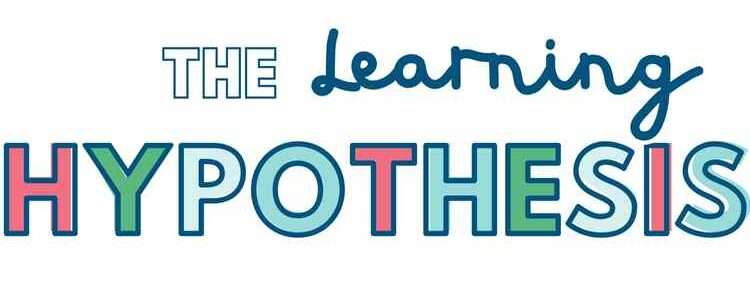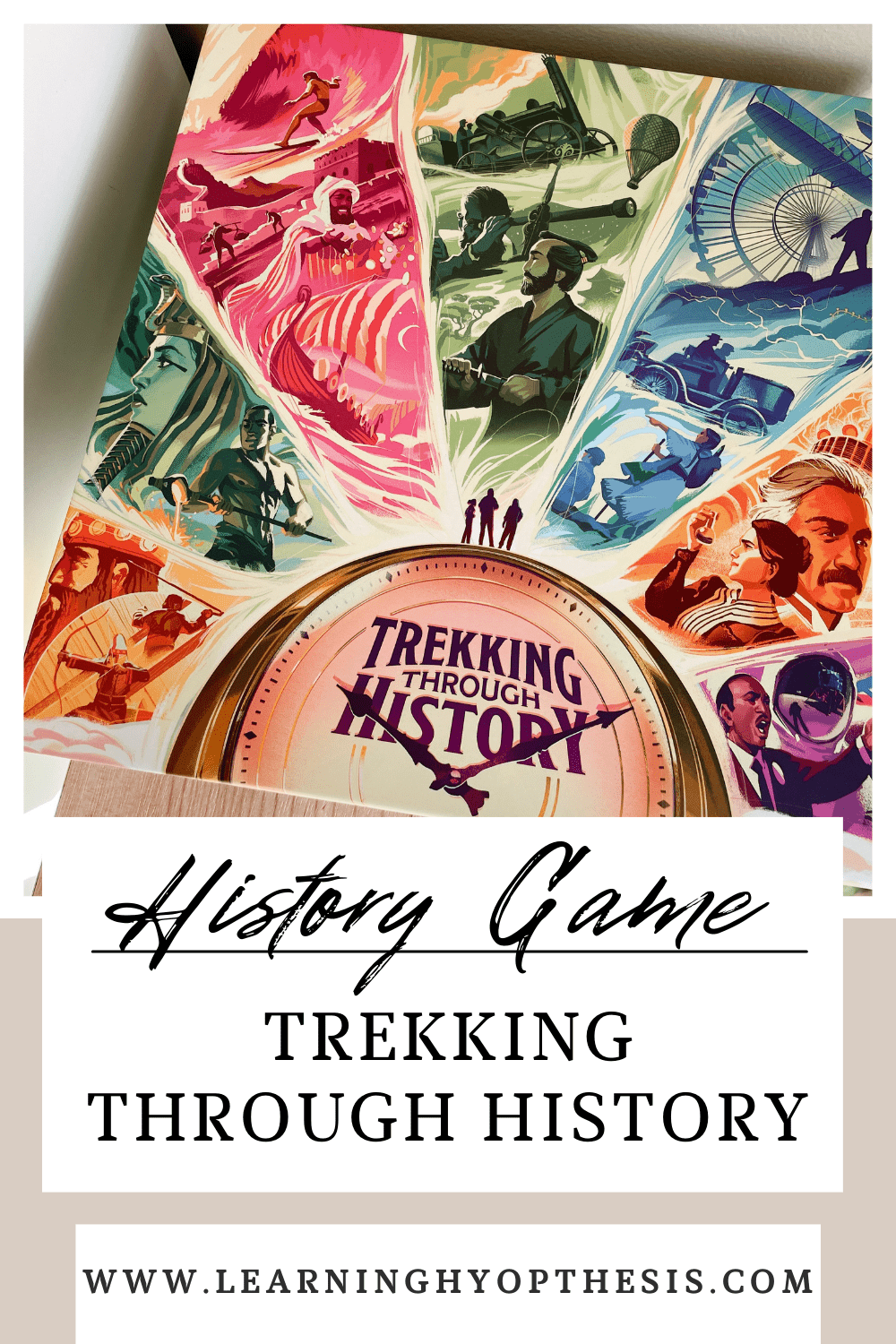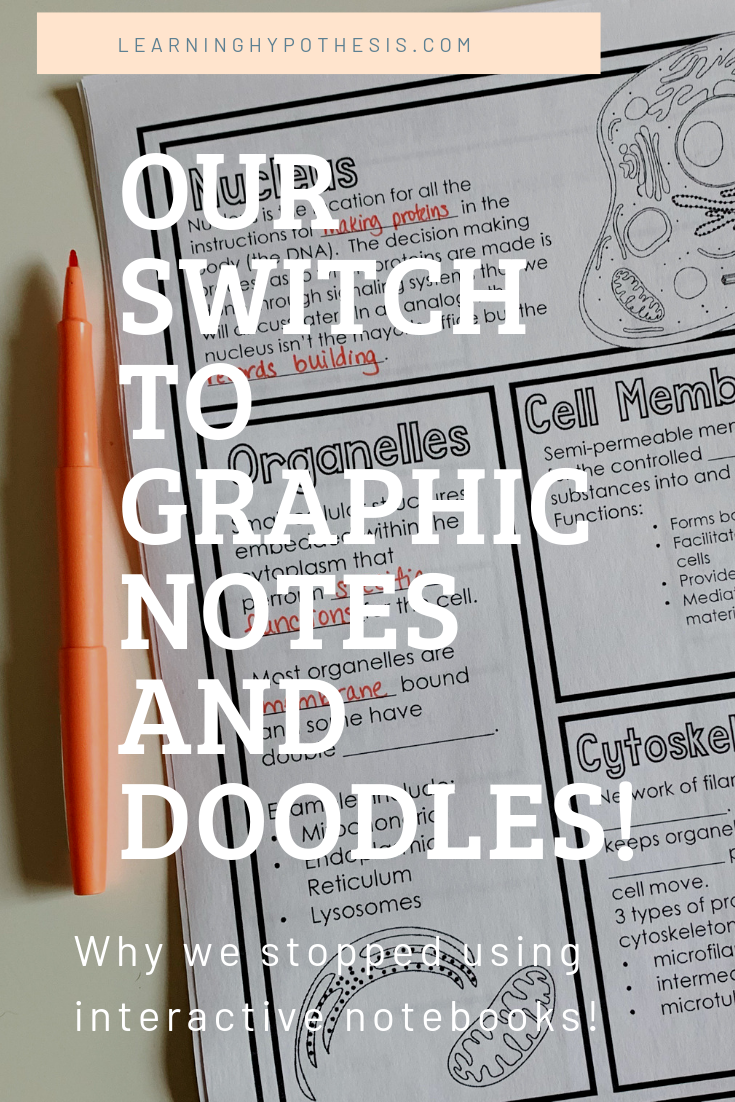Escape Room Puzzle Ideas
I wanted to give you guys some escape room puzzle ideas that you can use at home or in the classroom. I started using escape rooms with my own kids in order to capture their attention and keep them on task and really get them involved with the content.
You know, I’m a teacher and homeschooler so I was using them in “escape the classroom” type games.If you don’t know what escape rooms are, check out escape rooms for kids and escape the classroom posts for a little more background.
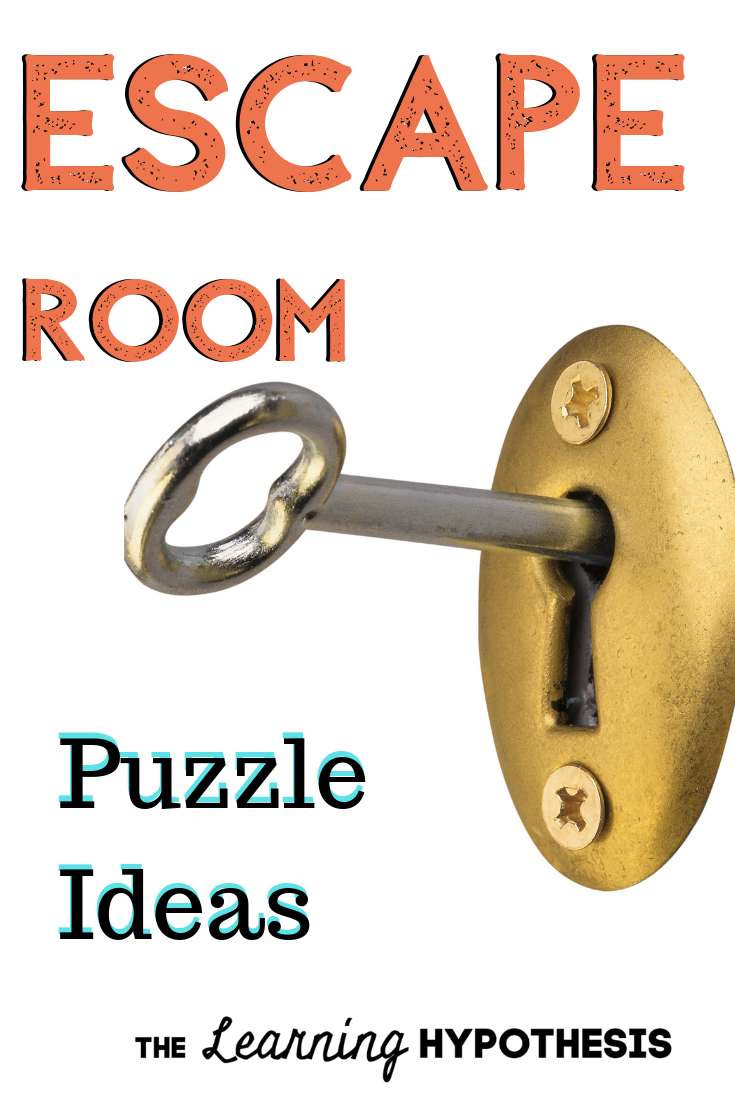
What is the point? Solving an escape room game.
Escape rooms are games. They consists of a series of tasks, clues, or puzzles that must be solved to either
- physically escape the room (not easy to accomplish and execute for a DIY escape room)
- digitally escape the room (a little easier)
- solve the problem presented in the scenario that lets you “escape the consequences” of not finding the solution (the easiest DIY escape room – and LOTS of fun)
Want to hit the easy button on Escape Room Design?
Try the Escape Room DIY Course & Kit

Setting the Scene
Create a scenario leading the participants towards one of the three outcomes listed above.I recently wrote an entire post on setting up your DIY escape room. The scenario is telling them what they need to do in order to solve the escape room and win the game. This can be done in lots of ways. This is an example from one of my escape the classroom games (homeostasis escape room),
You and your team have been invited to one of the most popular amusement parks in the world to help design a new roller coaster. To make sure you are up to the task, the other engineers have created an encrypted message that must be decoded and given security in order to enter the research and development facility.
When creating DIY escape rooms the scenario sets the stage so that the players feel they are immersed in the game. This can be a either simple paragraph (like above) or you can go big and add pieces of the story to each part of the puzzle or even use props. Props can be anything from stuffed animals to tools to objects in the medicine cabinet. It’s totally up to you and the scenario you create.

Solving the puzzle and ending the game
Each of the escape room puzzles in the game needs to provide a piece that is needed to reach the ultimate solutions. This can be accomplished in lots of ways.
- The escape room puzzles could each provide a codeword to decode a message.
- Each escape room puzzle provides a clue word which the players put together to make a sentence providing the solution for the scenario.
- You can also be collecting numbers that will break a digital lock or a padlock and the solution for the scenario will be inside.
- You might collect hints to help us solve a riddle
- Lastly, code words that lead to the location of an actual key that opens the lock where the solution can be found.
The idea is that each puzzle helps to move the escape room forward. That way everyone is staying in the game and not losing interest.

Escape Room Puzzle Ideas
These are ideas for the smaller puzzles that you will ask the participants to solve and these should help prepare them to solve the larger puzzle (or breaking out of the room)
Logic puzzles
Logic puzzles are one of the easiest ways to start off an escape room challenge for your DIY escape room. They are readily available, they are challenging, and they allow people to work together – which is really the core of any family activities. These are a few examples of the logic puzzles that I’ve made and used with my own kids.
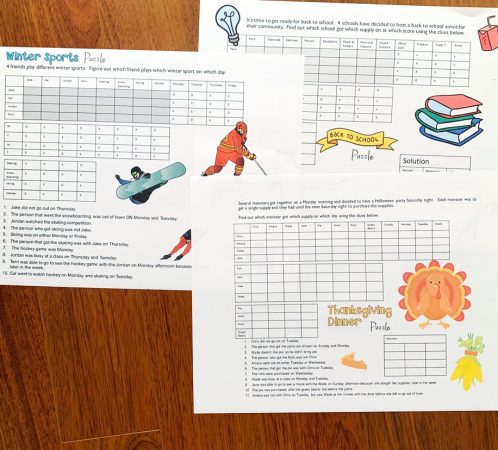
The easiest thing to do is have this as a puzzle and once it is complete – give them the envelope with the clue (see above) to the solution.
Sequencing games or puzzles
Sequencing is a higher-level thinking activity so it creates exactly the right level of escape room challenge. In this escape room puzzle idea, you provide a set of visual or written clues and ask them to put them in order. People love putting things in order so this tends to be a favorite in an escape room for kids. This is a set of social media clues that I ask players to put in order.
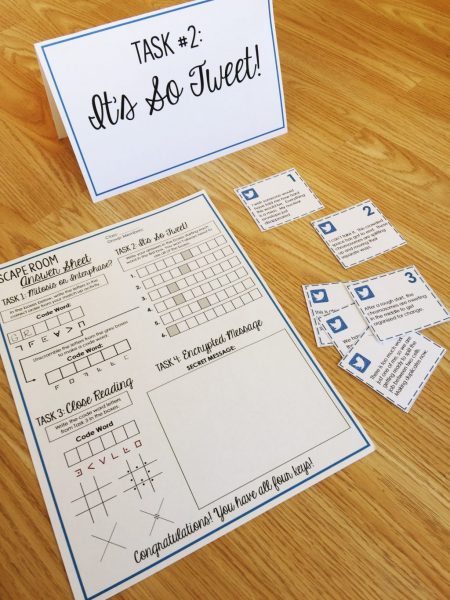
Depending on the age and scenario you can either create clues, use sequence puzzles, or even pictures of them (or yourself) doing a task. Just like in the previous puzzle, the easiest thing to do is have this as a puzzle and once it is complete – give them the envelope with the clue (see above) to the solution.
Jigsaw Puzzles
For this escape room idea, you can either use puzzles that you have on hand, buy cheap puzzles, or grab a template and make one. One one side is the image and it has an image or a code on the back. Once they solve the puzzle, they’re able to flip it over and see the code or solution on the back. This allows them to move to continue to move through the game.
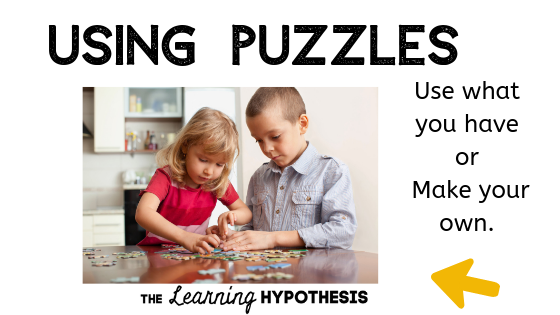
Mazes
Mazes are great escape room puzzle ideas. You can use clues or simple mazes to work through – depending on the age of the kids and how much help they have. This can be a great opportunity for your youngest kids to get to participate and feel like they’re adding to their team.
Riddles
Using riddles are great puzzles in an escape room. I’ve found a lot of success just using Google to search for riddles by age or subject. Riddles go great with physical clues in the space.
Questions
Don’t ever forget the use of simple questions as a puzzle. These can be trivia about the topic or more specific questions (perfect for an escape the classroom activity). These are are a great addition to escape the classroom type games even so people love trivia and don’t shy away from questions in fun games.
Use your Senses
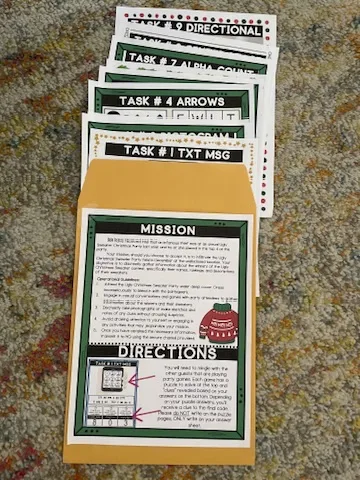
Make sure to find ways to activate all the senses (or as many as possible). A well timed moment when the lights go off and a feather duster goes across legs can make the imagination go wild. This can be a great way to reveal an obvious clue that you may not want to be seen earlier in the game.
Use your props
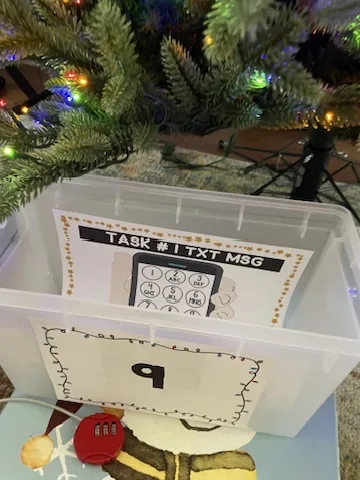
Combine puzzles with props in the actual room or digital space. For example, have the clocks set to 1:05 and create clue for kids to use the time to find a clue or answer in a book. A riddle to direct people to take a closer at the clock and then the time on the clock is a digital lock code or combination for a padlocks.
Locks and keys
You can make locks, keys, codes, digital locks As simple or as complex as you want. Because I’m cheap and I don’t want to have to keep up with physical locks I usually use codewords. Then I ask the kids to decipher a code. You could use digital locks (find out more about digital locks here), a padlock with a combination, or lock and key.
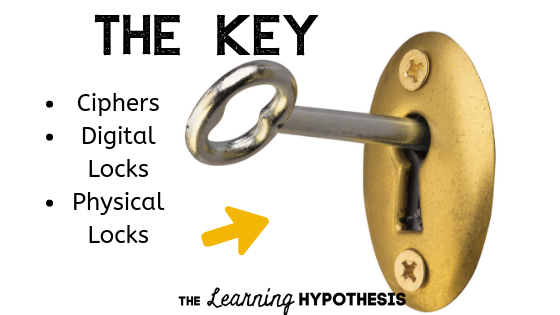
I will say that you need to remember to make it as easy to execute from the setup standpoint as possible. There is nothing worse than the promise of something fun that never comes to fruition.
The Solution
Make sure that you have a way to clearly solve the problem or escape the room. This may require an answer sheet to keep up with clues. You can use digital answer sheets or a simple print out.
Have fun! Get creative. These are just a few of the escape room puzzles ideas to get your started.
